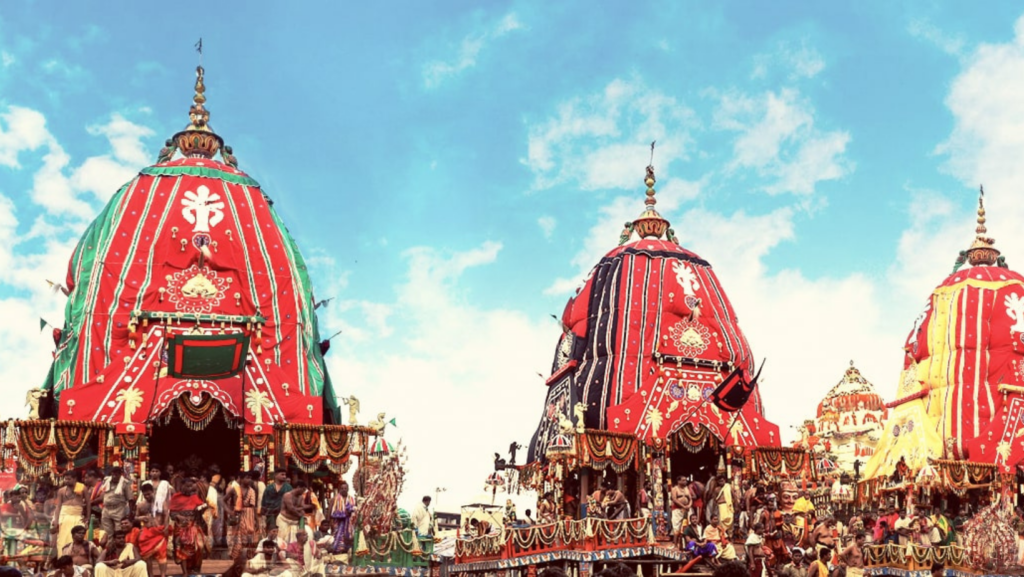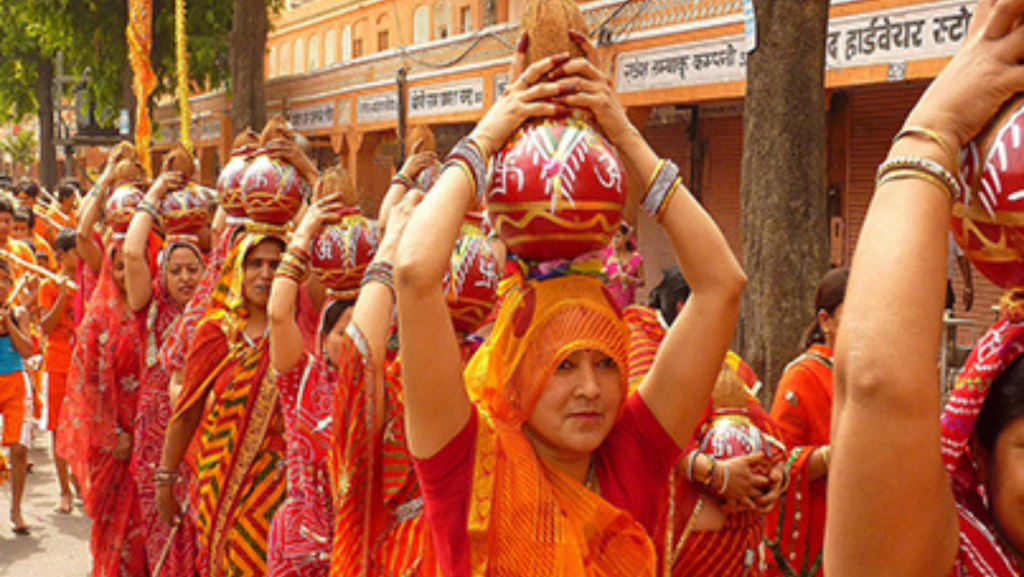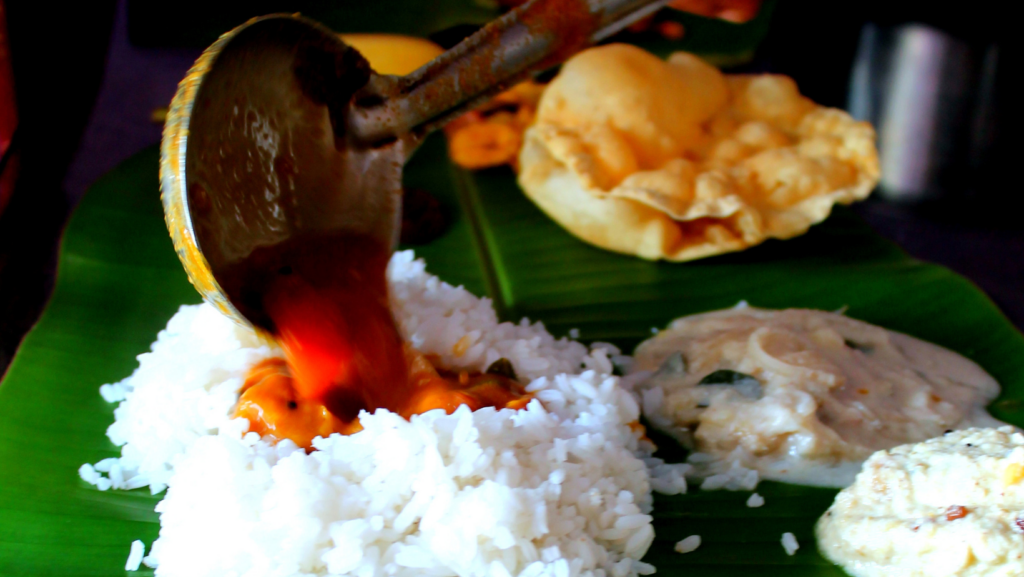India, a land of incredible diversity and rich cultural heritage, is renowned for its colourful festivals that celebrate various aspects of life, religion, and nature. While many tourists flock to India during the cooler months, they often miss out on the captivating festivals that take place during the summer and monsoon seasons. These lesser-known celebrations offer a unique glimpse into the country’s regional traditions and provide an unforgettable experience for those willing to venture off the beaten path.

One such festival is the Rath Yatra, held in the eastern state of Odisha. This ancient festival, which translates to “Chariot Festival,” is a grand celebration of Lord Jagannath, a form of Lord Krishna, in July. The main event involves a magnificent procession where three giant wooden chariots, beautifully decorated and towering over 45 feet high, are pulled by thousands of devotees through the streets of Puri. The chariots carry the idols of Lord Jagannath, his brother Balabhadra, and sister Subhadra, from the Jagannath Temple to the Gundicha Temple. The festival is steeped in history and mythology, with preparations beginning months in advance. The construction of the chariots itself is a sacred ritual, with each part of the chariot holding symbolic significance. The wood used for the chariots is specially selected and sanctified before the building process begins. Witnessing the sheer scale and fervour of this celebration is an awe-inspiring experience. The air is filled with the chanting of devotees, the sound of traditional musical instruments, and the excitement of the gathered crowds. The Rath Yatra is not just a religious festival but also a celebration of community spirit and unity.

Moving northward, the Hemis Festival in Ladakh is another summer celebration that showcases the region’s rich Buddhist culture. Held at the majestic Hemis Monastery, situated amidst the stunning landscape of the Himalayas, this two-day festival in July commemorates the birth of Guru Padmasambhava, a revered spiritual leader. The highlight of the festival is the mesmerizing masked dances performed by monks, adorned in vibrant costumes and intricate masks. Each dance tells a story and carries deep symbolic meaning, often depicting the triumph of good over evil. The monastery comes alive with the sound of traditional music, the aroma of incense, and the energy of the gathered devotees. Visitors to the Hemis Festival have the opportunity to witness ancient rituals, explore the monastery’s beautiful architecture, and immerse themselves in the peaceful and spiritual atmosphere. The festival also features a colourful bazaar where local artisans showcase their handicrafts, offering a chance to take home a piece of Ladakhi culture.

In the western state of Rajasthan, the Teej Festival is a joyous celebration that marks the arrival of the monsoon season. This festival holds special significance for married women, who pray for the well-being and longevity of their husbands. Women dress up in colourful traditional attire, adorn themselves with henna and jewellery, and gather to sing folk songs and swing on beautifully decorated swings. The festival is accompanied by various rituals and customs, such as the offering of special foods and the exchange of gifts between families. The vibrant atmosphere and the enthusiasm of the participants make the Teej Festival a delightful experience. The streets of Rajasthan come alive with processions, music, and dance, as women celebrate the onset of the monsoon and the promise of a bountiful harvest. The festival is also an opportunity for women to bond with each other, share stories, and strengthen community ties.

Down south, in the lush state of Kerala, the Onam festival is a grand celebration of the harvest season and the homecoming of the legendary King Mahabali. The festival spans ten days and is marked by a variety of festivities. One of the most striking aspects of Onam is the creation of elaborate flower carpets called Pookalam, which adorn the entrances of homes and public spaces. These intricate designs, made using a variety of flowers and leaves, are a sight to behold and showcase the artistic skills of the people of Kerala. The festival also features traditional feasts called Sadhya, served on banana leaves and consisting of a wide array of delicacies.

The famous snake boat races, held on the serene backwaters of Kerala, add to the excitement a d spectacle of the festival. The races, known as Vallam Kali, involve long, narrow boats manned by skilled oarsmen, competing against each other in a display of strength and teamwork. Onam is a time when people from all walks of life come together to celebrate, reinforcing the strong sense of community and unity that characterizes Kerala’s culture.
In the northeastern state of Arunachal Pradesh, the Dree Festival is a fascinating celebration of the Apatani tribe’s culture and traditions. The festival, which marks the beginning of the agricultural season, involves a series of rituals and ceremonies performed by the tribe’s priests. These rituals, passed down through generations, are believed to ensure a good harvest and protect the community from harm. Traditional folk dances, indigenous sports competitions, and the display of unique handicrafts and textiles are integral parts of the festival. Visitors to the Dree Festival have the rare opportunity to interact with the Apatani tribe, learn about their way of life, and witness their age-old traditions. The festival is a testament to the tribe’s deep connection with nature and their commitment to preserving their cultural heritage in the face of modernization.

Apart from these five captivating festivals, there are numerous other summer and monsoon celebrations across India that are equally fascinating. The Bonalu festival in Telangana is a vibrant celebration of the goddess Mahakali, featuring colourful processions, traditional music, and the offering of special dishes to the deity. The Behdienkhlam festival in Meghalaya is a four-day extravaganza that involves the beating of traditional drums, the construction of tall, decorated structures called “Rots,” and the performance of ritual dances. The Puri Beach Festival in Odisha is a celebration of the state’s rich cultural heritage, featuring sand art exhibitions, traditional dance performances, and mouthwatering seafood.
India’s summer and monsoon festivals offer a profound and immersive experience for those willing to step off the conventional tourist trail. These celebrations provide a window into the country’s diverse regional cultures, traditions, and beliefs. They allow visitors to connect with locals, participate in age-old rituals, and create unforgettable memories. By planning their visits around these festivals, tourists can gain a deeper appreciation for India’s rich tapestry of culture and heritage.
India’s summer and monsoon festivals are a testament to the country’s enduring traditions and the resilience of its people. They showcase the ability to find joy, celebrate life, and come together as a community, even in the face of adversity. By experiencing these festivals firsthand, you not only gain a deeper understanding of India’s cultural fabric but also create lasting bonds with the people and places you encounter along the way.
In the words of Rumi, “Let the beauty of what you love be what you do.” Let your love for travel, adventure, and discovery guide you to the heart of India’s summer and monsoon festivals, and let the beauty of these celebrations fill your soul with joy and inspiration. Happy travels!

